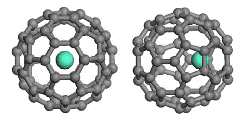Department of Chemistry
Date of this Version
2010
Citation
The Journal of Chemical Physics 133, 134707 (2010); doi: 10.1063/1.3485291
Abstract
We investigate the possible structural transition of a planar Au10 cluster during its soft landing on a TiO2 (110) surface with or with no oxygen defects. The collision between the gold cluster and the oxide surface is simulated using the Car–Parrinello quantum molecular dynamics method. Both high-speed and low-speed conditions typically implemented in soft-landing experiments are simulated. It is found that under a high-speed condition, the gold cluster Au10 can undergo a sequence of structural transitions after colliding with a defect-free TiO2 (110) surface. When the TiO2 (110) surface possesses oxygen vacancies, however, chemical bonds can form between gold and Ti atoms if gold atoms contact directly with the vacancies. As a consequence, one oxygen vacancy is capable of trapping one Au atom, and thus can split the Au10 into two parts while bouncing back from the surface. In addition, we study reaction pathways for the CO oxidation based on three isomer structures of Au10 observed in the soft-landing simulation: (1) the precollision two-dimensional structure, (2) a postcollision three-dimensional (3D) structure, and (3) an intermediate (transient) 3D structure that appeared in the midst of the collision. This study allows us to examine the structure-activity relationship using the Au10 as a prototype model catalyst.


Comments
Copyright © 2010 American Institute of Physics. Used by permission.